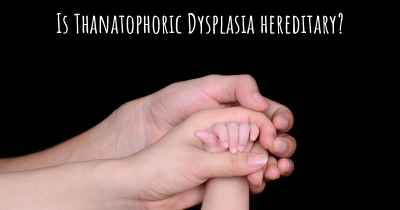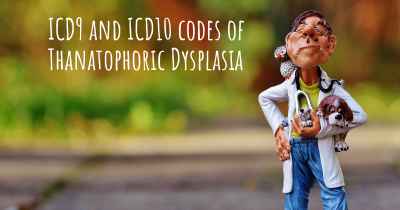What is the history of Thanatophoric Dysplasia?
When was Thanatophoric Dysplasia discovered? What is the story of this discovery? Was it coincidence or not?

History of Thanatophoric Dysplasia
Thanatophoric dysplasia is a rare genetic disorder that affects skeletal development in humans. It was first described in medical literature in 1967 by Maroteaux and Lamy, who identified a series of cases with distinct skeletal abnormalities. The term "thanatophoric dysplasia" was coined by them, derived from the Greek words "thanatos" meaning death and "phoros" meaning carrying, reflecting the severe nature of the condition.
Since its initial discovery, significant progress has been made in understanding the causes, clinical features, and management of thanatophoric dysplasia.
Causes and Genetics
Thanatophoric dysplasia is caused by mutations in the fibroblast growth factor receptor 3 (FGFR3) gene. This gene provides instructions for making a protein that is involved in the development and maintenance of bone and brain tissue. The specific mutations in FGFR3 associated with thanatophoric dysplasia result in the production of an abnormal protein that disrupts normal bone growth.
The condition is inherited in an autosomal dominant pattern, which means that a single copy of the mutated gene from either parent is sufficient to cause the disorder. However, most cases of thanatophoric dysplasia occur sporadically, meaning they are not inherited and result from new mutations in the FGFR3 gene.
Clinical Features
Thanatophoric dysplasia is characterized by severe skeletal abnormalities that are evident before birth. The most common features include extremely short limbs, a disproportionately large head, a narrow chest, and underdeveloped lungs. These physical abnormalities can lead to life-threatening complications, such as respiratory insufficiency and difficulty in feeding.
Additionally, individuals with thanatophoric dysplasia may have other associated features, including a small ribcage, a curved spine, a cleft palate, and abnormalities in the brain and facial structures.
Diagnosis and Management
Prenatal diagnosis of thanatophoric dysplasia is typically made through ultrasound examination during pregnancy. The characteristic skeletal abnormalities can be visualized, and DNA testing can confirm the presence of mutations in the FGFR3 gene.
After birth, the diagnosis is confirmed through a physical examination and genetic testing.
Unfortunately, there is currently no cure for thanatophoric dysplasia. Management primarily focuses on supportive care to address the complications associated with the condition. This may include respiratory support, nutritional interventions, and surgical interventions to correct specific abnormalities.
Research and Future Directions
Research efforts in the field of thanatophoric dysplasia have primarily focused on understanding the underlying genetic mechanisms and developing potential therapeutic interventions.
Advances in genetic testing techniques have allowed for improved prenatal diagnosis and counseling for families at risk of having a child with thanatophoric dysplasia. Additionally, studies investigating the role of FGFR3 mutations in bone development have provided insights into potential targets for future drug therapies.
While significant progress has been made, there is still much to learn about thanatophoric dysplasia. Ongoing research aims to further elucidate the molecular mechanisms involved in the disorder and explore potential treatment options.








